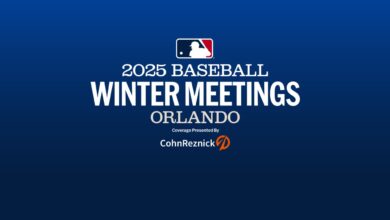
The Rundown Lite: Cubs Can Pad Lead, Two Cubs Lead NL All-Star Outfield Voting, MLB’s Balls Inexplicably Have More Drag
I have tendinitis in my ankle from having my foot propped a certain way on a series of flights, then I hurt my elbow opening a beer bottle on Father’s Day. Pretty sure my body is made up of papier mache and painter’s tape. Can’t wait to be out on a turf field in mid-90s temps this weekend. In the meantime, here are a few quick topics to get you going on Tuesday.
Brewers at Wrigley
Check out the series preview for more specifics, but the nutshell version here is that hosting the Brewers for three games provides the Cubs a golden opportunity to pad their division lead. Then again, they could also end up much closer than they’d like. Even bigger, they head to St. Louis for four games to start next week after hosting the Mariners to close this homestand.
It’s kind of ironic that my daughter’s final Shriners follow-up is next Tuesday in St. Louis, which I think we might have scheduled in part due to the Cubs being in town. Except that wouldn’t be ironic at all, Alanis. And we probably made the appointment well over a year ago, so I’m not sure we even knew about the game. In any case, I will probably not be going since my son has games in Louisville starting next Wednesday.
Regardless of my personal stuff, the Cubs have seven games in the next 10 days against the two teams trailing them in the division
ASG Voting
As Jacob Zanolla noted already, the Cubs are acquitting themselves well after the first round of All-Star voting results were revealed. Pete Crow-Armstrong is leading the way among NL outfielders, which isn’t a surprise given how he’s captured the attention of fans around the world. Kyle Tucker being second is not quite as expected, though he’s got a big fanbase behind him and probably gets a little pull from Astros fans.
Phase 1 of the voting concludes on June 26 at noon EST, and you can vote as many as five times per rolling 24-hour period in that time. The leading vote-getter in each league — Aaron Judge and Shohei Ohtani — following this phase receives an automatic spot in their respective starting lineup. The top two vote-getters at every position and the top six outfielders will move to Phase 2, which opens June 30.
Here’s how the other Cubs shake out:
- Michael Busch is in third, way behind Freddie Freeman and Pete Alonso
- Nico Hoerner is likewise third, but could catch Tommy Edman
- Dansby Swanson is fifth and probably won’t move up
- Matt Shaw is fourth, which is objectively hilarious
- Carson Kelly sits second with a good buffer on third
- Seiya Suzuki was looking good until Rafael Devers got traded
You can see all the results here.
Something’s up with MLB’s balls
Justin Turner‘s fake balls got a little publicity last week, but it’s MLB’s actual balls that continue to draw far too much attention. Funny how the constant controversy began after the league purchased Rawlings, the manufacturer of all the baseballs used in the minors and majors. While you would think ownership would entail a higher degree of quality control, the opposite seems to be true.
According to The Athletic‘s review of publicly available data from the last nine years that MLB has tracked batted-ball data, equally hard-hit fly balls are traveling 4 feet less, on average. Simply put, there’s more drag on the balls. More drag, eh? Sounds to me like Rob Manfred and his cronies are just a bunch of groomers.
(I hate that I have to make this clear, but that’s a joke.)
The league has admitted that the performance of its baseballs is different from previous seasons, but it can’t or won’t explain why.
“For the last several seasons, MLB has made drag information available to the public online, which is updated daily during the season,” read a statement from league spokesperson Glen Caplin. “We are aware of an increase in average drag this season and have provided information to the Major League Baseball Players Association on this issue as our experts continue to study any potential causes beyond normal variability in a product made by hand with natural materials. There has been no change to the manufacturing, storage or handling of baseballs this year, and all baseballs remain within specifications.”
Perhaps we should look to Andrew McCutchen for an explanation. Replying to a tweet from Mets beat writer Ben Yoel, the venerable Pirate shared information that amounts to little more than a shrug emoji from MLB. I changed the quotation marks to be grammatically correct, but otherwise left grammar and syntax as-is for posterity, just in case you care.
“I was told by a rep for MLB that the balls are indeed different this year,” Cutch said. “They stated ‘higher seams’ which produces more drag on baseball, causing baseballs to not travel as far as they should. When asked why, I was told ‘every baseball is hand sewn so no ball is the same.’ When I asked if there is something that can be done about correcting the current performance of this years baseball, I was told there was ‘nothing’ that can be done about it this season BUT, they are ‘working hard on getting to the bottom of why the seams are higher.’”
While this seams [sic] like an issue that will persist for quite some time due to QA and supply chain logistics, there’s one way they can fix it in a hurry. Rather than waiting for Aaron Judge to get close to another home run record, MLB can just put those juiced balls back into wide rotation. Problem solved.

